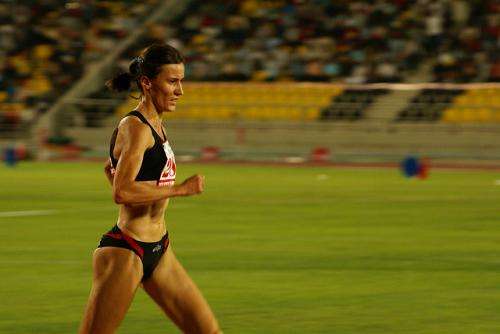Athlete exhaustion tool measures up to training regime

A tool to help athletes consistently and reliably measure their level of post-performance exhaustion has been developed by Murdoch University researchers.
The Hecimovich-Peiffer-Harbaugh Exercise Exhaustion Scale (HPHEES) is intended to help quantify 'acute onset exhaustion', which is defined as loss of strength or vitality and decrease in physical activity.
If left unaddressed, acute onset exhaustion can lead to chronic exhaustion, decreased performance and overuse injuries, and has been linked to athlete burnout and even disease.
"Within sport, the ability to measure an athlete's level of fatigue or exhaustion is essential to provide the best environment for training and competition success," study author Dr Mark Hecimovich says.
"But quantifying a person's subjective feelings in relation to the demands of the activity they are performing has always been a challenge.
"We wanted to develop a simple and reliable tool that could provide baseline data and which, over time, could show how levels of exhaustion were changing.
"For example, when an athlete or coach has used the HPHEES over, say a month, they'll get a sense of the athlete's state, and if training is increased, or a medication is introduced, they can reliably evaluate its effect against existing data."
Dr Hecimovich says a better understanding of acute onset exhaustion can help athletes and support staff structure workout/performance and recovery cycles to create optimum training programs.
Scale can provide early warning indicator
Monitoring change can also provide early warning that training needs to be modified so that the accumulative effects of acute onset exhaustion don't escalate into a more problematic physical or mental state.
The HPHEES scale was developed through a literature review, athlete feedback and input from academics and professionals in exercise science, physiology, psychology and related fields.
Initial consultations led to a 25-item questionnaire with a 10-point Likert-type scale in which participants could answer along a sliding scale from 'not at all' to 'extremely difficult'.
Sample questions include 'How easily can you replicate your last game, event, or competition', 'How mentally cloudy do you feel' and 'How weak do your legs and/or arms feel'.
Three-hundred-and-seventy-nine members of tri-athlete and cycling clubs in Australia, Canada, South Africa, the United Kingdom and the United States completed the trial-HPHEES, from which a final 14-question version was created.
Dr Hecimovich says the end result has high validity yet is simple to use.
While the HPHEES has not yet been put into practice, the researchers have received some early inquiries from both athletes and sport scientists.
















